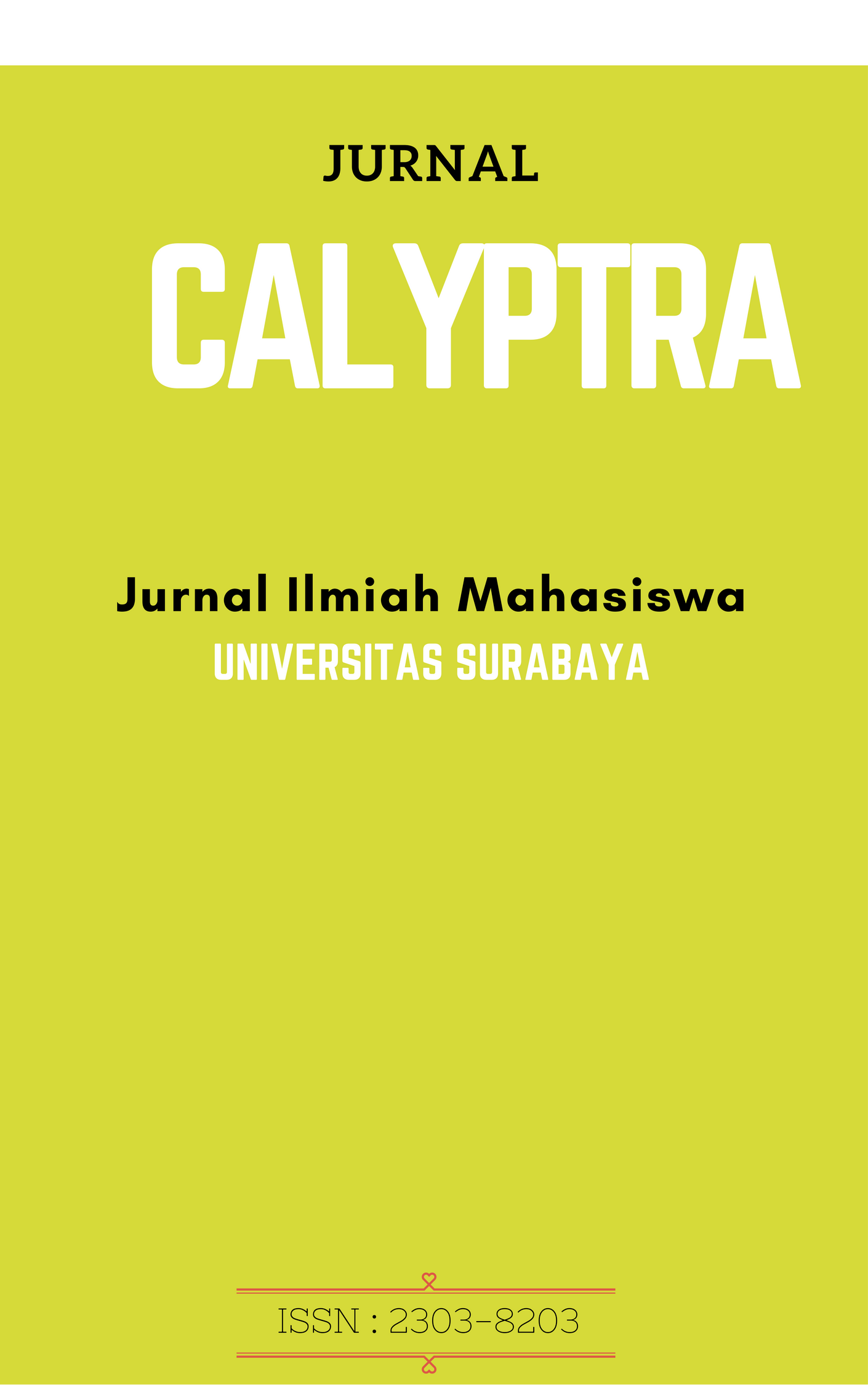COMPULSIVE BUYING BEHAVIOR PADA YOUNG ADULTS YANG MENGALAMI FAMILY DISRUPTION DI SURABAYA
 Abstract Views:
100 times
Abstract Views:
100 times
 PDF - FULL TEXT Downloads:
135 times
PDF - FULL TEXT Downloads:
135 times
Abstract
Abstrak – Penelitian ini bertujuan untuk menguji faktor-faktor yang mempengaruhi terbentuknya compulsive buying behavior pada young adults yang mengalami family disruptions di Surabaya. Penelitian ini menggunakan pendekatan purposive sampling, dimana sampel berupa responden yang mengalami family disruptions sebelum berusian 18 tahun, pernah melakukan pembelian pakaian dan/atau sepatu dalam 6 bulan terakhir, berpendidikan minimal SMA, bertempat tinggal di Surabaya, dan berusia antara 18 sampai 25 tahun. Responden dalam penelitian ini berjumlah 150 orang. Analisis dalam penelitian ini dengan menggunakan model SEM (Structural Equation Modeling). SPSS 18.0 for Windows serta Lisrel 8.70 digunakan untuk menguji Model Measurement dan Structural pada penelitian ini.Hasil penelitian ini menunjukkan bahwa Family Disruption memiliki pengaruh positif pada Compulsive Buying Behavior; Intangible Resources memiliki pengaruh positif pada Concept-oriented Communication; Family Disruption memiliki pengaruh negatif pada Intangible Resources dan juga pada Socio-economic Status, dan 9 hasil penelitian yang tidak memiliki pengaruh atau dapat dikatakan tidak memiliki makna.
Kata Kunci: Family Disruptions, Compulsive Buying Behavior, Intangible Resources, Family Communication Style, Socio-economic Status
Abstract – This study aims to examine the factors that influence the development of compulsive buying behavior on young adults who experiened family disruptions in Surabaya. This study used purposive sampling approach, which the sample consists of respondents who experienced family disruptions before they were 18- year-old, had bought either clothes and/or shoes within the last 6 months, have a minimum education of high school, currently resides in Surabaya, and is between 18 to 25 years old. Respondents in this study amounted to 150 young adults. The analysis in this study used a model of SEM (Structural Equation Modeling). SPSS 18.0 for Windows and Lisrel 8.70 were used to test the Measurement and Structural Model of this study. The result indicates that Family Disuruptions have a positive impact on Compulsive Buying Behavior; Intangible Resources have a positive impact on Concept-oriented Communication; Family Disruption have a negative impact on both Intangible Resources and Socio Economic Status, and other 9 results don’t have any impacts or said to not have any meaning.
Keywords: Family Disruptions, Compulsive Buying Behavior, Intangible Resources, Family Communication Style, Socio-economic Status
Downloads
References
Bindah, E. V. Dan Othman N., 2012, An empirical study of the relationship between young adults consumers characterized by religiously oriented family communication environment and materialism, Journal of CrossCultural Communication, Vol. 8 No. 1 pp. 7-18
Dekovic, M., Wissink, L. B, dan Meijer, 2004, “The Role of Family and Peer Communication in Adolescents Antisocial Behavior”, Journal of Adolescence, Vol. 27 No. 5, pp. 497-514
Diefenbach, T., 2013, Intangible Resources – a categorial system of knowledge and intangible assets, Open University Business School of United Kingdom
Dittmar, H., 2005, “Compulsive Buying Tendencies – a growing concern? A review and empirical exploration of the role gender, age, and materialism”, British Journal of Psychology, Vol. 96 No. 4, pp. 467-491
Faber R.J., dan Micthell, J., 1995, “Two forms of compulsive buying and binge eating”, Journal of Consumer Research, Vol. 22 No, 3
Feliciano, D. J., 2011, Factors of Adolescent Self-Concept: Mass Mediated, Peer, and Family Communication, Universitas West Florida
Grougiou V., Moschis, G., dan Kapoutsis, I., 2015, “Compulsive buying: the role of earlier in the life events and experiences”, Journal of Consumer Marketing, Vol. 32 No. 4, pp. 278-289
Hair et al, 2010, Multivariate Data Analysis, 7th Edition, Pearson Prentice Hall
Moschis, G., Ong, S. F., Mathur, A., Yamashita, T., dan Bouzaglo, S. B., 2011, Family and television influences on materialism: a cross-cultural life course approach, Journal of Asia Business Studies, Vol. 5 No. 2: p.124-144
Rindfleisch, Aric dan Burroughs, J. E, 1997, “Family Structure, Materialism, and Compulsive Consumption”, Journal of Consumer Research
Roberts, J. A., dan Tanner, J.F. 2003, Family structure, materiliasm, and compulsive buying”, Journal of the Academy of Marketing Science, Vol. 31 No. 3: p 300 – 311
Verhoeff, P., Franses, P. H., & Hoekestra, J.C. 2002. The effect of relational constructs on customer referrals and number of services purchased from a multiservice provider: Does age of relationship matter? Journal of the Academy Of Marketing Science, Vol. 3 pp. 202-216
Workman, L., dan Paper, D., 2010, Compulsive Buying: A Theoritical Framework, Journal of Business Inquiry, Vol. 9 No. 1: p. 89-126
Zikmund, W.G., Babin, B.J., Carr, J.C., dan Griffin, M., 2009, Business Research Methods (8th ed.). Cengage Learning.
http://finance.detik.com/read/2014/12/14/111438/2776707/4/pengeluaran-orangri-67-buat-belanja-13-untuk-bayar-utang, diakses pada 24 Februari 2016
- Articles published in CALYPTRA are licensed under a Creative Commons Attribution-ShareAlike 4.0 International license. You are free to copy, transform, or redistribute articles for any lawful purpose in any medium, provided you give appropriate credit to the original author(s) and the journal, link to the license, indicate if changes were made, and redistribute any derivative work under the same license.
- Copyright on articles is retained by the respective author(s), without restrictions. A non-exclusive license is granted to CALYPTRA to publish the article and identify itself as its original publisher, along with the commercial right to include the article in a hardcopy issue for sale to libraries and individuals.
- By publishing in CALYPTRA, authors grant any third party the right to use their article to the extent provided by the Creative Commons Attribution-ShareAlike 4.0 International license.



